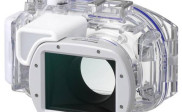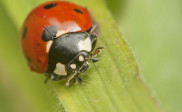Playing with Shutter Speed
In photography, one of the three exposure settings is shutter speed, which dictates the length of time that the camera shutter is left open. By experimenting with the different speeds, you can create various kinds of interesting results. Slow shutter speeds allow more light to pass through to the image sensor (if it is a digital camera) or the film (if it is a film camera), while fast shutter speeds mean less light is captured. Always remember to adjust the other two exposure settings as well, namely aperture and ISO, to compensate for the amount of light that enters the lens.
The choice of shutter speed also affects how movement is presented in your photo. Fast speeds can make moving objects appear as if they are frozen, and slow speeds can be used to capture streaks of movement and light trails.
How Shutter Speed is Measured
Shutter speed is measured in seconds or fractions of a second. The standard shutter speeds you will find in modern cameras are 1 s (or one second), ½ s, ¼ s, 1/8 s, 1/15 s, 1/30 s, 1/60 s, 1/125 s, 1/250 s, 1/500 s, and 1/1000 s (faster and slower speed options are available depending on the camera model.) Some cameras include the B (bulb) setting, which lets you keep the shutter open indefinitely as long as the shutter release button is kept pressed.
Fun Ways to Use Various Shutter Speeds
Long exposure – a very slow shutter speed will come in handy with low-light scenarios and to capture quick light flashes. For example, this stunning photo of a Bangkok cityscape at night was taken with a shutter speed of nearly 2 minutes. This was enough time to catch the lights from the buildings as well as the lightning bolts.

Photo by MikeBehnken
Light trails: Moving light sources leave behind light trails, which can be captured with a slow shutter speed. You need to place the camera on a steady surface, such as a tripod, to keep the trails smooth and the rest of the image clear and defined. In this photo, the car light trails were caught using an 18-second exposure time.

Photo by Steven C Luck
Frozen action: When you use a fast shutter speed, such as 1/1250 as in the photo below, your moving subject can appear as if frozen in the middle of the action.

Photo by Robert S. Donovan
Liquids are popular subjects for frozen motion shots. When moving water is shot with a fast shutter speed, it will appear to look glassy and droplets will seem suspended in mid-air. This water splash shot was taken using 1/60 s.

Photo by Tambako the Jaguar
Motion blur: This would be the opposite of frozen action, and a slow shutter speed is needed to get a blurry effect. A slow exposure time such as 8 seconds, as in this gorgeous photo of a shoreline, will make moving water appear silky and smoky.

Photo by Johan J. Ingles-Le Nobel
Panning: This technique works by following the moving subject with the camera lens as it passes by. The resulting image should be a relatively clear subject and a streaked background as in this shot below, where a shutter speed of 1/10 s was used. Panning takes some practice before you get the hang of it, but the outcome is well worth the effort.

Photo by Jeff Kubina
Abstract: Moving the camera while using a slow shutter speed can also produce fascinating abstract photos. For instance, this image below was created with the lens pointing out the window while riding a metro train. The train was moving fast and the camera shutter was open for 2 seconds, blurring all objects and making them unrecognizable. However, it did emphasize the curve of the light streaks which created a stunning abstract shot.

Photo by Stig Nygaard
Playing with your camera’s shutter speed will help you learn how to master this exposure setting and create fun and creative compositions.




Although the shutter speed on the water shot may have been 1/60th second (looking at EXIF?), in reality it was probably shot in a dark environment with a flash. 1/60th on it’s own isn’t fast enough to freeze splashing water in my experience.
During the 1/60th exposure, a flash could be used which would ‘freeze’ movement. A flash produces light for <1000th/sec. You can't use a shutter speed this fast with a flash, because it is too fast to synch. So you leave the shutter open for a short duration, while the flash freezes the movement.
At least, that's my take on it. 🙂